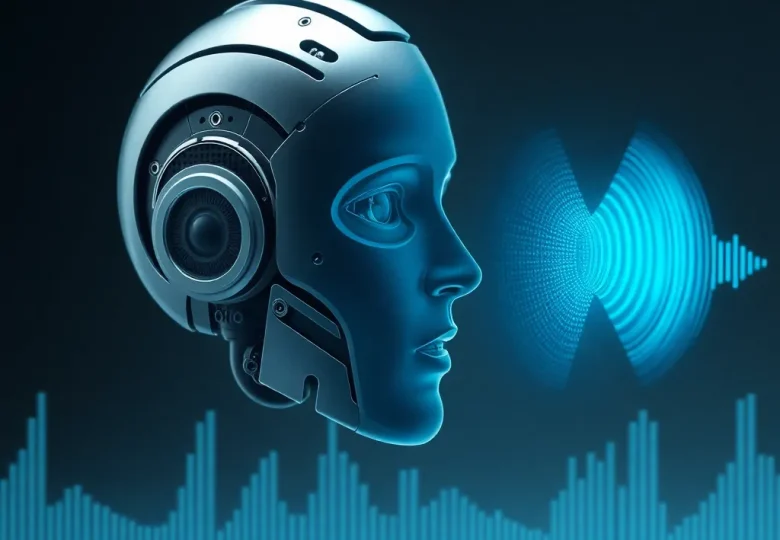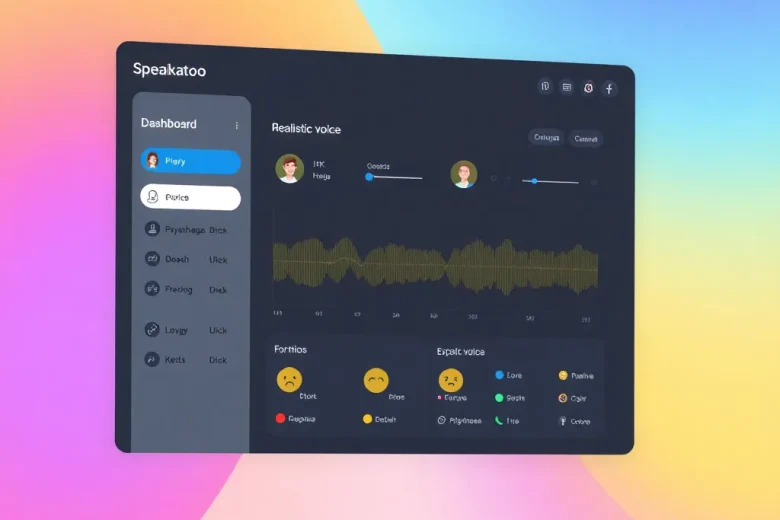Introduction: The New Era of AI Voice Technology
In 2025, the internet has undergone a significant change. What was once dominated by robotic, monotone voices has evolved into a world where AI-generated voices sound remarkably human-like, emotional, and expressive. From YouTube narrations to educational apps and brand marketing videos, these voices are redefining how people interact with content.
At the heart of this transformation is human-like TTS (Text-to-Speech) — a technology that merges artificial intelligence, natural language processing, and emotional expression to produce speech that sounds just like a real person.
This evolution is not just a technical leap — it’s a cultural and creative revolution. And platforms like Speakatoo are leading the way.
Evolution of Text-to-Speech (TTS): From Robotic to Realistic

The journey of TTS technology began decades ago with basic voice synthesis systems that could only pronounce words in a mechanical tone. They were functional — good for accessibility and basic automation — but far from natural.
The Early Days (Pre-2010)
TTS systems relied heavily on rule-based synthesis. They could speak but couldn’t convey emotion or natural intonation. Listening to them felt like hearing a robot read a manual.
Neural Network Revolution (2016–2020)
The breakthrough came when deep learning and neural networks emerged. Models like WaveNet by DeepMind and Tacotron by Google transformed the field, allowing systems to generate speech based on data-driven prosody and emotion patterns.
Human-Like Speech (2021–2025)
By 2025, the latest AI voiceover technologies can capture not just pitch and tone, but also subtle nuances like laughter, sighs, and pauses. These details make AI voices sound authentic and relatable — so much that many listeners can’t tell the difference between AI and human narrators.
The Technology Behind Human-Like TTS
Modern TTS systems combine multiple advanced technologies to achieve naturalness and clarity:
- Neural Text-to-Speech (NTTS): Converts text into lifelike waveforms using deep neural networks.
- Prosody Control: Adjusts rhythm, emphasis, and intonation to match emotional context.
- Voice Cloning: Allows AI to replicate specific voices with accuracy.
- Multilingual Support: Enables speech generation in multiple languages and accents.
- Emotion Modulation: Adds happiness, sadness, excitement, or calmness depending on content tone.
These innovations have created a new benchmark for voice generation — one where realism meets scalability.
How AI Voiceover Is Revolutionizing Digital Content Creation
AI voiceover tools have opened doors for creators, educators, and businesses worldwide. With high-quality realistic text to speech, producing professional-grade voice content is now faster, cheaper, and more flexible than ever before.
For Content Creators
- No need to hire expensive voice actors or record in studios.
- Generate multilingual voiceovers in minutes.
- Maintain consistent voice branding across videos, podcasts, and social posts.
For Educators
- Bring lessons to life with emotional, engaging narration.
- Create audio-based learning materials accessible to all.
- Support students with visual or reading disabilities through realistic AI voices.
For Businesses
- Personalize customer experiences with natural-sounding voice assistants.
- Develop multilingual marketing campaigns instantly.
- Enhance brand storytelling with unique, human-like voice identities.
Benefits of Realistic Text to Speech for Various Industries
- Media and Entertainment: Human-like TTS enables quick content dubbing, film narration, and automated news reading with lifelike results.
- E-Learning and Education: AI voices can create inclusive, interactive, and engaging e-learning experiences for diverse learners.
- Gaming: AI-driven voice characters can respond dynamically to players, creating immersive gameplay experiences.
- Marketing and Advertising: Brands use AI voiceovers to scale ad campaigns, voice intros, and explainer videos — with regional accents for better connection.
- Accessibility: For visually impaired users, realistic text to speech ensures smoother, more relatable communication through screen readers.
Speakatoo: Powering the Future of AI Voice

Amid this global AI voice boom, Speakatoo has emerged as a leader in human-like TTS and AI voiceover technology.
Speakatoo bridges the gap between synthetic and authentic voice experiences — offering users the ability to generate studio-quality voiceovers with natural human emotion, accent precision, and real-time generation speed.
What makes Speakatoo stand out is its focus on realism, diversity, and emotional depth, making it a go-to solution for creators and enterprises alike.
Why Choose Speakatoo for Human-Like TTS
Here’s why Speakatoo has become a favorite among creators, educators, and marketers:
- Unmatched Voice Quality: Every output is smooth, expressive, and indistinguishable from real human speech.
- Massive Language Support: Speakatoo supports 130+ global languages — ideal for localization.
- Emotional Intelligence: Voices can express happiness, calmness, sadness, and enthusiasm naturally.
- Fast & Affordable: Create hours of voice content in minutes, without recording studios or editing tools.
- Custom Voice Branding: Businesses can design a unique AI voice that represents their brand personality.
- Cloud-Based Convenience: Everything runs on the web — no software installation needed.
These advantages make Speakatoo a true next-generation voice solution in the AI voiceover space.
Key Features That Make Speakatoo Stand Out
- Natural Speech Synthesis: Speakatoo uses next-gen deep learning and NLP models to produce smooth, emotional speech with perfect rhythm.
- Multi-Voice Selection: Users can choose from male, female, and regional voice options, giving projects a personalized touch.
- Real-Time Preview: Instant playback helps creators fine-tune tone and speed before final export.
- Multi-Language Flexibility: From English and Hindi to Spanish, Korean, and Arabic — Speakatoo covers it all.
- API Integration: Developers can integrate Speakatoo’s TTS engine into their own apps or services with ease.
- Speech-to-Speech and Translation Tools: Beyond TTS, Speakatoo offers speech-to-speech and text translation, expanding its ecosystem for full-scale audio creation.
Comparing Speakatoo with Other AI Voice Solutions
| Feature | Speakatoo | Other Platforms |
|---|---|---|
| Voice Realism | ⭐⭐⭐⭐⭐ | ⭐⭐⭐ |
| Emotion Control | Yes | Limited |
| Language Support | 130+ | 40–60 |
| Pricing | Affordable | Expensive |
| Voice Customization | Full | Partial |
| Speed | Instant | Moderate |
Speakatoo not only offers more natural voice output but also provides creative flexibility, which is essential for professionals in 2025’s fast-paced content landscape.
Challenges and Ethical Questions in AI Voice Generation
While the benefits of AI voiceover are undeniable, the technology also raises important ethical discussions.
Deepfake Concerns
Voice cloning can be misused for impersonation or misinformation. That’s why companies like Speakatoo implement strict authentication layers and watermarking for AI-generated voices.
Job Impact
Traditional voice actors face competition from AI voices. However, many professionals are now collaborating with AI tools instead of competing — combining human creativity with AI speed.
Privacy and Consent
Ensuring that original voices used for training have full consent remains vital for responsible AI innovation.
The Future of AI Voices Beyond 2025
Looking ahead, AI voices will become even more context-aware. They’ll understand emotions, adapt tone to audience type, and interact conversationally.
In the next few years, expect breakthroughs like:
- Voice-to-Emotion AI that reacts to user sentiment.
- Hyper-personalized digital avatars with unique AI voices.
- Real-time language-to-language voice translation.

Speakatoo is actively developing these next-gen voice technologies — ensuring creators stay ahead of the curve.
Final Thoughts: Voice Is the New Digital Identity
The rise of human-like TTS isn’t just changing how we create content — it’s changing how we connect.
From small creators to global enterprises, AI voiceover platforms like Speakatoo are empowering millions to communicate more naturally, inclusively, and efficiently.
In 2025, your voice is your brand — and with Speakatoo’s realistic text to speech, you can make that voice heard like never before.
